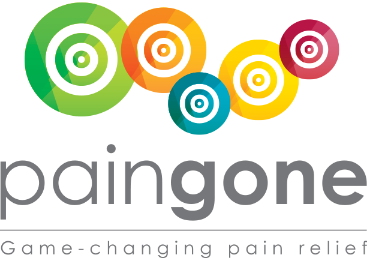
Dec 16, 2021
Paingone
Chronic Pain Relief Market Set to Double in Size in Next Decade
Prescient & Strategic Intelligence (P&S Intelligence) recently released their projections on the global chronic pain crisis and the market’s response in the next ten years. In 2020, the chronic pain treatment market was worth over eighty million dollars, but by 2030 it is projected to reach over 162 million. A large portion of the increase will be tied to the rise in the elderly population. Geriatric patients are more likely to suffer from chronic pain caused by arthritis, posture, pulled or strained muscles, inactivity, and other issues.
Among the findings of the market research company are:
- A surge in the next decade in the sales of pain relief drugs due to increased incidence of low back pain, migraine, and facial pain.
- A rise in direct-to-consumer sales of devices for chronic pain relief.
- High volume use of medications and devices to treat cancer pain due to the rapid rise in cancer cases.
- An increased focus on alternatives to opioid pain relief, including virtual reality, wearable medical devices, pain-relieving implants, and alternative treatments such as acupuncture.
FDA Approves Seglentis for Acute Pain Management
Seglentis, a first-in-class treatment for acute pain, has been approved by the FDA. The combination drug combines the analgesic tramadol with a form of celecoxib, an anti-inflammatory.
Esteve Pharmaceuticals noted, “Seglentis is a new analgesic designed for acute pain management in a multimodal treatment approach targeting four complementary pain relief mechanisms. It offers a new treatment option for acute pain management aligned with the multimodal analgesia now considered standard of care.”
The celecoxib’s novel co-crystal structure creates an unusual pharmacokinetic profile that differs from the results from other forms of administration. Developed by Esteve Pharmaceuticals, Seglentis will be marketed in the United States through KOWA Pharmaceuticals America.
ESP Pain Block May Decrease Pain of Pancreatitis
New case studies at John P. Kathrine G. McGovern Medical School at UT Health indicate that ultra-sound guided ESP blocks may be an effective alternative to current pain protocols for patients with acute or chronic pancreatitis pain.
Pain relief from Erector Spinae Plane (ESP) blocks appear to be effective because of the spread of local anesthetic to sympathetic nerve roots, particularly in the paravertebral space. This makes ESP blocks a valuable new option for multimodal pain relief.
“In looking at the literature, my colleagues and I noticed how effective ESP blocks can be for abdominal surgeries,” said Joseph Liao, MD, a resident at UTHealth, in Houston. “Given the similar innervation of the pancreas, we thought the blocks may also work in patients with acute or chronic pancreatitis. When patients are being treated with high amounts of pain medications, even if it’s a multimodal approach, I think it’s worthwhile to explore other interventional techniques, such as ultrasound-guided ESP blocks, as adjunct approaches to limit the number of opioids prescribed.”
Young Adults with Chronic Pain Suffer Severe Sleep Disturbances
Lack of sleep and chronic pain are often part of a vicious cycle that can be difficult to break. Individuals suffering from chronic pain often have difficulty falling asleep or staying asleep. In turn, lack of sleep makes it more difficult to control pain and minimizes the efficacy of many treatment options. Recent studies confirm that this link between pain and sleep disturbances is common in young adults aged 17 to 25.

Study author Shikha Bansal, MD, MBBS, staff anesthesiologist at Thunder Bay Regional Health Sciences Centre in Ontario, explained, “Pain and sleep health are known to have a bidirectional relationship. Sleep disruption is associated with increased pain sensitivity, prolonged duration of pain, and [it] predicts chronic pain. In turn, the degree of pain relief can impact the quality and disruption of sleep.”
Researchers at the University of Toronto conducted an observational study identifying sleep disruption patterns in young adult chronic pain patients. The study focused on identifying the prevalence of sleep disturbances and their various patterns. Researchers also tracked potential relationships between sleep disturbances and patient descriptors such as quality of life, depression, and self-efficacy. The study analyzed patients’ answers to questions on the Patient Health Questionnaire (PHQ-9), Pain Catastrophizing Scale (PCS), and Pain Self-Efficacy Questionnaire (PSEQ) as well as Epworth Sleepiness Scale data.
Eighty-five percent of patients reported sleep disruption, with the most common complaint being insomnia, which over 67% experienced. Also noted were difficulty initiating sleep, problems staying asleep, and combinations of these problems. Other issues included restless leg syndrome, parasomnia, delayed sleep phase disorder, non-restorative sleep, and waking due to pain.
According to Jo Nijs, PT, MT, Ph.D., of the Free University of Brussels, a professor of physiology, “In adults, we now understand that sleep problems, such as insomnia, typically present as a major barrier for effective treatment of persistent pain. “Therefore, clinicians working with chronic pain patients are advised to screen for the presence of sleep problems in all their patients. Those who have sleep problems require effective treatment in the early phase of their multimodal treatment plan. The best-evidence care for insomnia in patients with persistent pain is cognitive-behavioral therapy for insomnia. This new study by Bansal and colleagues adds to this by showing the importance of sleep problems in young adults with persistent pain.”
Pain Trivia: There are about two hundred pain receptors per square centimeter of skin. There are only fifteen for pressure, one for warmth, and six for cold. It’s not a surprise that as a feeling, pain can be far more intense and concentrated than any other type of sensation. There is, however, a rare condition called Congenital Insensitivity to Pain (CIP). People with this condition, sometimes called congenital analgesia, cannot feel physical pain and never have. It’s incredibly dangerous, as pain is how we know when we’re injured. Children may break bones, burn themselves, or have lacerations without being aware of the problem.
Is Paingone helping your patients and your practice?
Tell us your success story.
A robust retail strategy is essential to growing your practice.
You only have so many hours a week available for appointments. The fastest way to increase your bottom line is to incorporate profitable products that generate repeat business and build your reputation as a medical professional. That’s where Paingone comes in.
Contact us below to learn more about our products, wholesale pricing and how Paingone can benefit your practice.

